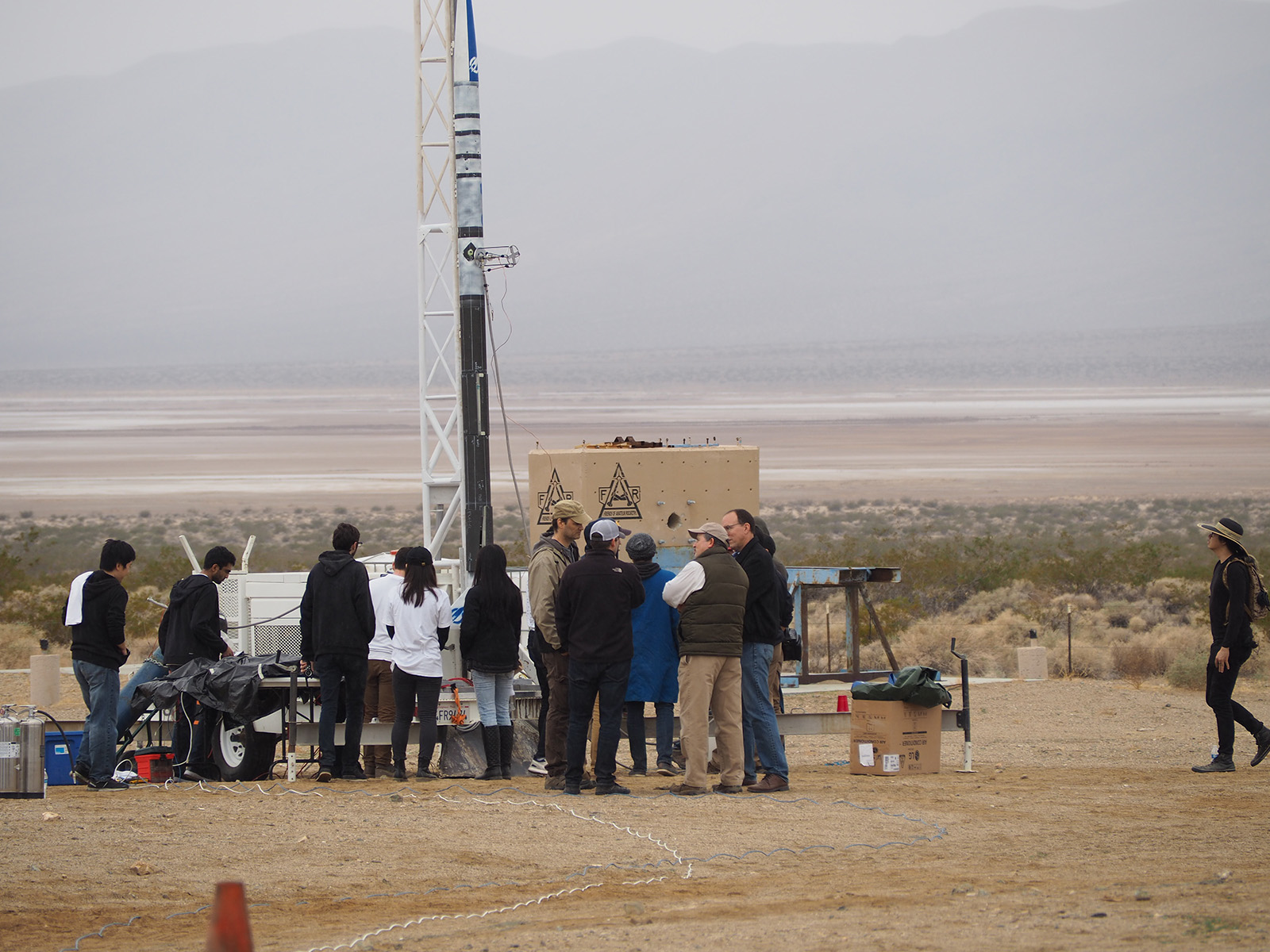Rocket Project at UCLA soars over altitude record with recent launch

Anil Nair, a fourth-year aerospace engineering student and club president, said the Rocket Project at UCLA is preparing for the FAR-MARS competition in May, which awards $50,000 to the collegiate team whose rocket comes closest to a 45,000 feet altitude. (Photo courtesy of Daniel Pineda)
By Allison Ong
April 11, 2018 1:27 a.m.
The countdown had officially begun. About 50 students were crammed into a bunker in the Mojave Desert, awaiting the test launch of their latest liquid rocket prototype. Before long, those peering through the bunker windows cheered as flames erupted from the rocket’s base.
Ares, a student team within the Rocket Project at UCLA, conducted a launch in March that broke the altitude record for student-built bipropellant liquid rockets, reaching a final altitude of 12,550 feet. Anil Nair, a fourth-year aerospace engineering student and club president, said the team was preparing for the FAR-MARS competition in May, which awards $50,000 to the collegiate team whose rocket comes closest to a 45,000 feet altitude.
Rockets use either solid, liquid or hybrid fuel systems. Solid rockets, which precombine fuel and oxidizer material within the body, are considered the lowest performing and are often found on hobby store shelves, said Daniel Pineda, club mentor and postdoctoral scholar in mechanical and aerospace engineering.
Liquid rockets, however, separate fuel and oxidizer from each other, performing better than solid rockets by producing thrust with a higher energy density. The launch process is controlled by multiple steps, including the remotely triggered release of a pressurized line and the precise mixing of liquid – such as oxygen and ethanol – nwithin the engine.
Ares’ rockets cost an estimated $7,000 to build, though future rockets could cost even more, Pineda said. However, he added the club has received more support from the UCLA Henry Samueli School of Engineering and Applied Science in the past year, including access to the machine shop, 3-D printers and a new rocket lab in Engineering IV. The group also received donations of carbon fiber from Boeing and free aluminum heat treatment from local companies, he added.
The team has made 13 trips to the desert in preparation for FAR-MARS and had its first successful static fire test in September, in which it ignited the rocket’s engines under restraint, Nair said. Currently, the team is focusing on rebuilding parts and lightening the rocket’s load to increase aerodynamic performance.
Katherine Lee, airframe manager for Ares and a third-year aerospace engineering student, leads the subteam responsible for building structural components.
“We’re going to have all new bulkheads, a new nose cone, new fins, a better recovery system … to make everything lighter, safer and stronger,” she said.
Students are gearing up for the final weeks of construction before FAR-MARS. The lab’s walls are lined with shelves of odds and ends, including pieces of rocket recovered from past launches. The previous model’s parachute was torn during flight, but the 16-foot aluminum body, painted in white and blue, is still intact.
Nair said the team learns through trial, error and troubleshooting.
“The aerospace industry typically uses liquid rockets. The level of complexity we work with has allowed people to gain industrial skills a lot sooner,” he said. “But with all these complicated steps and parts, there are so many ways (a launch) could go wrong – every way you could imagine.”
The Rocket Project is diverse, with students joining from all years and fields of study, Nair added. Team members can also help bring STEM outreach to local elementary and middle schools by giving lessons in building mini 3-D printed rockets.
Nair said preparing for the competition is stressful, but the team hopes to triple its record-breaking height to win the prize.
“Morale is important to keep up, but we’ve launched before – we know it’s possible,” he said.


